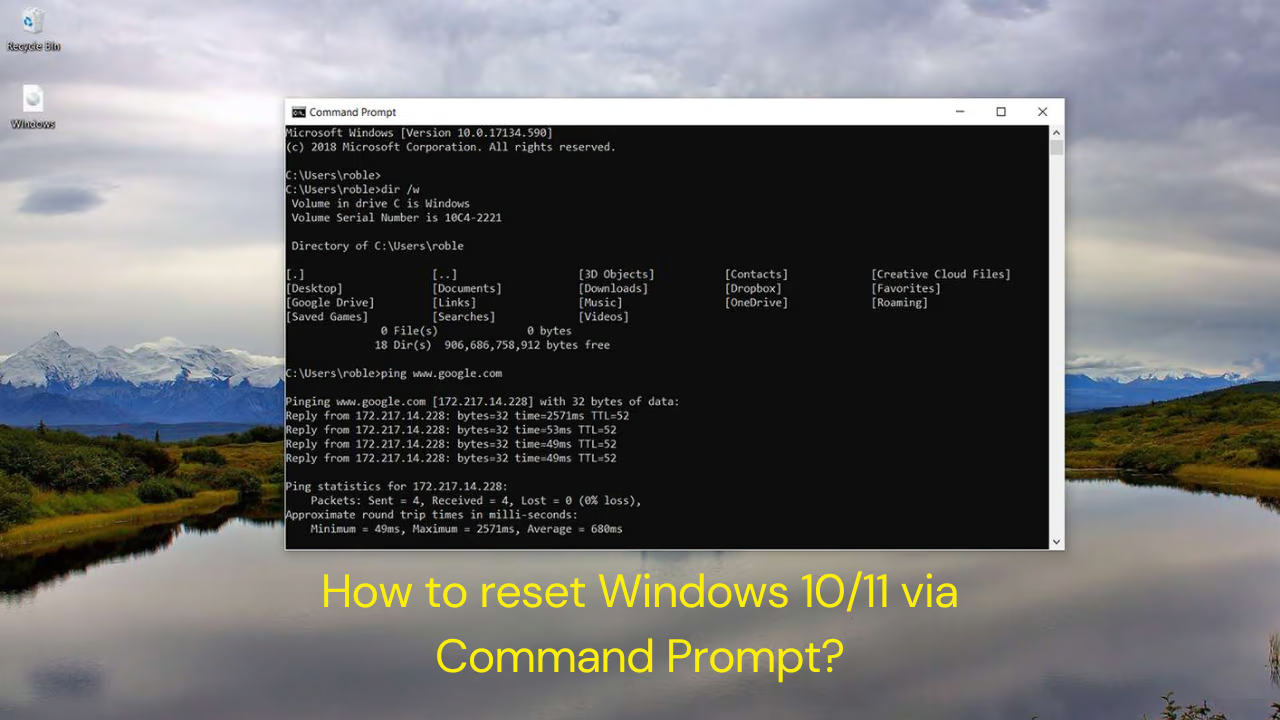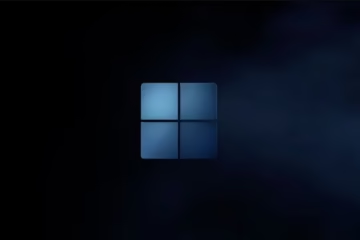When using Windows 10 and 11, there are times when problems may arise that can be resolved by resetting. Resetting the system using Command Prompt (CMD) is an effective method. This guide will explain in detail how you can reset Windows 10/11 via CMD.
Why reset Windows from CMD?
Resetting Windows from CMD allows you to resolve system issues without the need for a graphical interface. The process is technically safer and faster.
How to open CMD
1. Use Windows + R
1. Press Windows + R on the keyboard.
2. Type cmd in the Run dialog box and press Ctrl + Shift + Enter.
3. This will open Command Prompt in administrative mode.
2. Open CMD from the Start menu
1. Go to the Start menu.
2. Search for Command Prompt.
3. Right-click it and select Run as Administrator.
Procedure to reset Windows 10/11 using CMD
1. System Reset Command
1. Type the below command in Command Prompt:
“`cmd
systemreset -factoryreset
“`
2. Press Enter.
3. A pop-up screen will appear asking you whether you want to keep your files or remove all data.
Keep My Files: Will save personal files.
Remove Everything: Will delete all data and apps.
4. Choose the option as per your requirement and follow the instructions.
2. Using Advanced Startup
If the above command doesn’t work, you can use Advanced Startup.
1. Type the below command in Command Prompt:
“`cmd
shutdown /r /o
“`
2. Press Enter.
3. The system will reboot into Advanced Startup Options.
4. From here select Troubleshoot > Reset this PC option.
CMD Commands to Fix Windows Specific Issues
1. Use SFC (System File Checker)
This command scans and repairs system files.
“`cmd
sfc /scannow
“`
– Run it and let the process complete.
2. DISM (Deployment Image Servicing and Management)
Use DISM to repair the Windows image.
“`cmd
DISM /Online /Cleanup-Image /RestoreHealth
“`
This command fixes deeper issues.
What to do after the reset process?
1. Update Windows
After the reset, make sure your system is on the latest Windows updates.
1. Go to Settings > Update & Security > Windows Update.
2. Click on Check for Updates.
2. Install essential software
After the reset, reinstall essential software like browser, antivirus, etc.
3. Check data backup
If you took a backup before the reset, make sure the data is restored correctly.
Precautions
1. Backup all the important data before resetting.
2. Make sure your system is connected to power. 3. If you are unaware, seek the help of a technical expert.
Conclusion:
Resetting Windows 10/11 via CMD is a useful and efficient method. By following this guide, you can easily restore your system to as-new state and resolve issues.
FAQ: Frequently asked questions about resetting Windows 10/11 via CMD
1. Is it safe to reset Windows 10/11 via CMD?
Yes, resetting Windows using CMD is completely safe. But make sure you backup your important data before starting the process.
2. Will my data be deleted after resetting from CMD?
It depends on your selected process:
Keep My Files: Your personal files will be safe.
Remove Everything: All data and apps will be deleted.
3. What to do if CMD command is not working?
If the command doesn’t work, you can try the following options:
Use Advanced Startup Options.
Repair files using DISM and SFC commands.
Reset Windows via graphical interface.
4. Does resetting Windows from CMD require internet?
No, the reset process usually does not require internet. But if you are using DISM /RestoreHealth command, internet connection may be required.
5. How long does the reset process take to complete?
The reset process may take anywhere from 20 minutes to 1 hour, depending on your device speed and the selected option (keep or delete data).
6. Can I reset Windows from CMD without administrative access?
No, resetting Windows via CMD requires administrative access.
7. Will resetting delete my installed software?
If you choose the Remove Everything option, all software and apps will be removed. Choosing the Keep My Files option will only save your data, but apps may be deleted.
8. Can I use CMD to fix a specific problem?
Yes, you can use commands like SFC and DISM to fix problems. These help repair system files and restore the Windows image.
9. What to do if the problem persists after resetting via CMD?
If the problem persists after resetting, try the following solutions:
- Clean install Windows.
- Check the hardware.
- Contact professional technical support.
10. Do I need to reactivate Windows after resetting?
Usually, Windows activates automatically after a reset. If it doesn’t, use the Windows product activation information you have.












